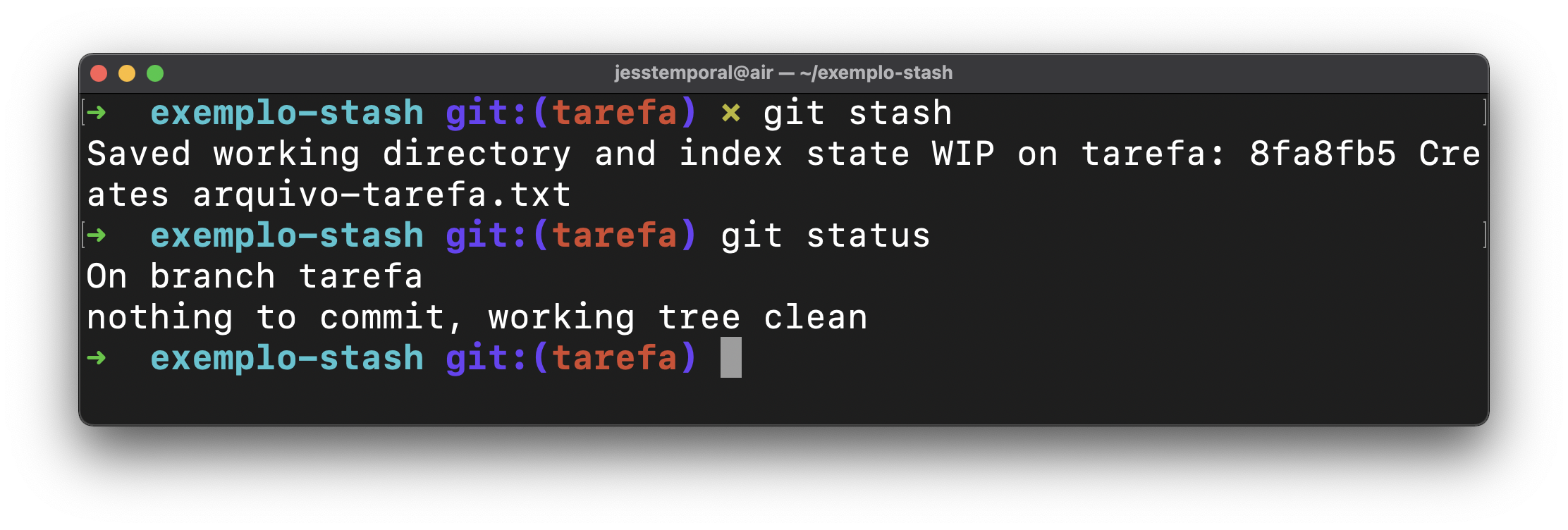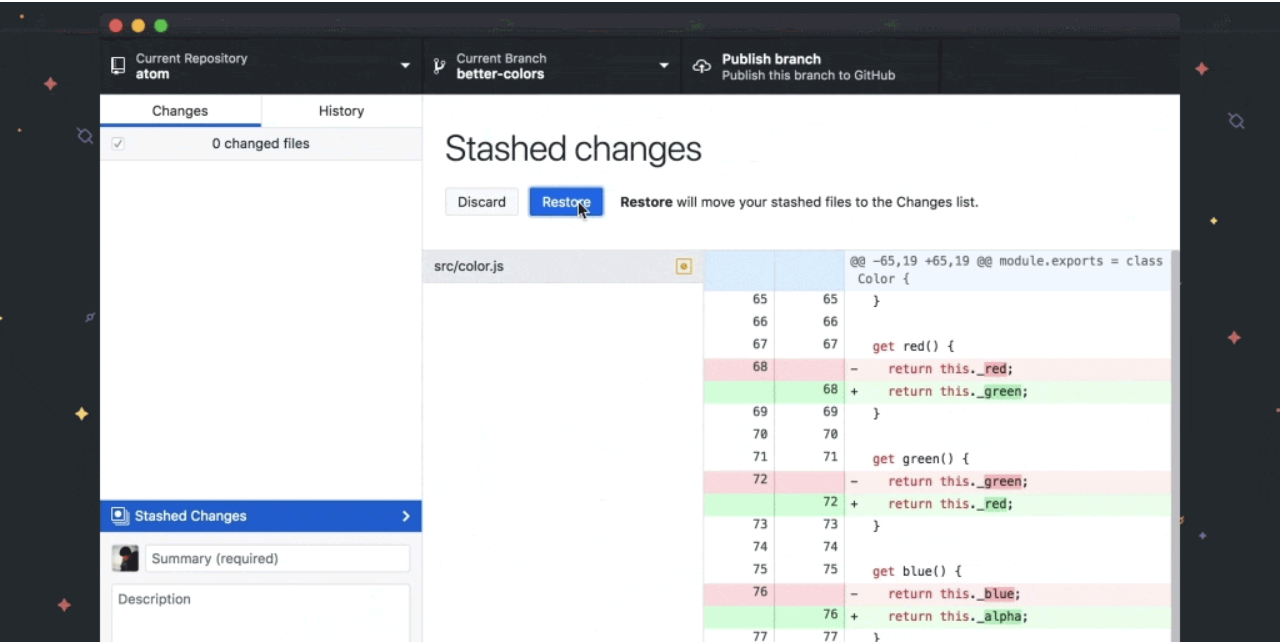

#STASH GITHUB DESKTOP CODE#
Overall, if you use GitHub as a code repository, the GitHub Desktop is the best client to use. And more importantly, you can easily add them to the master branch when they are complete. It’s also worth highlighting that you can easily create branches for your project. This not only allows you to verify if team members are doing their job but allows you to quickly identify errors when new code is added. It’s especially useful for collaborations because you can track any changes made to it and which author made those changes in a visual format.
#STASH GITHUB DESKTOP FREE#
Most importantly, this is a free open-source project, which is a big reason it’s the go-to option for most users. Users can avoid using the command line manually and instead log into GitHub, where they can use the GUI to manage code within the repository. This is because it works seamlessly with GitHub. GitHub Desktop is easily the most popular Git GUI for Windows. Secondly, the order on this list does not reflect the quality of the client. It’s also worth pointing out that you can run a virtual machine to gain access to some of these GUIs on different operating systems. And in the case of Linux, you need to make sure it’s compatible with your installation. The Best Git GUI Clients For Your Operating Systemīefore reading this list, there are two important things you need to understand.įirst, and most important, Git clients are built for specific operating systems. Let’s take a look at some of the best GUI clients available for Git. The tools available depend on the GUI client itself.Īs you can imagine, this is opening Git up to an entirely new user base, which is doing wonders for what you will find in the repository. Instead, you can use the built-in tools in a GUI client to make alterations to a project. This makes Git more accessible because you do not need to use the command line to make changes to a project. However, Graphical User Interface (GUI) clients change this by allowing users to work with Git in a visual mode. Normally, a user in Git will use the command line to make changes to a project, and this is still largely considered the “right” way to use Git. The actual clients that are created and available on Git include just about everything with Git GUI clients being the most popular. The simplest way to think of it is as a repository for code that allows you to save every revision of the code separately. Git is an open-source version control system that can handle small and large projects alike.
#STASH GITHUB DESKTOP SOFTWARE#
Today, I will share some of the most popular Git client software available for all three major operating systems. That’s why it’s the go-to platform for collaboration for developers worldwide. When it comes to having control over your project, Git is simply unmatched. Classes are small, hands-on, and expert-led.If you are interested in creating the perfect development environment for personal or commercial projects, you will be using a Git client. (Replace with the stash you want to delete, which you find in the list of stashes): To delete a specific stash, run the following command. To deletes all stashes, run this command: (Replace with the stash you want to restore, which you find in the list of stashes): git stash pop To apply a specific stash (and keep it in the stash list), run the following command.To apply a specific stash (and remove it from the stash list), run the following command.To apply the latest stash, run this command: To see a list of your stashes, run this command: You're not required to name each stash, but you may want to give it a meaningful name. git stash save "A meaningful name/message".To stash away your uncommitted code for later, run one of these commands: The commands below assume you've navigated to the folder for the Git repo. What do you do with the other code you've been working on? You can stash it away, do your work, and bring the code back from the stash. You get a request to make a change and push the code. Let's say you're working on some code that you're not ready to commit.

The Git Stash as a place to temporarily store that's not ready to be permanently stored in a commit.


 0 kommentar(er)
0 kommentar(er)
